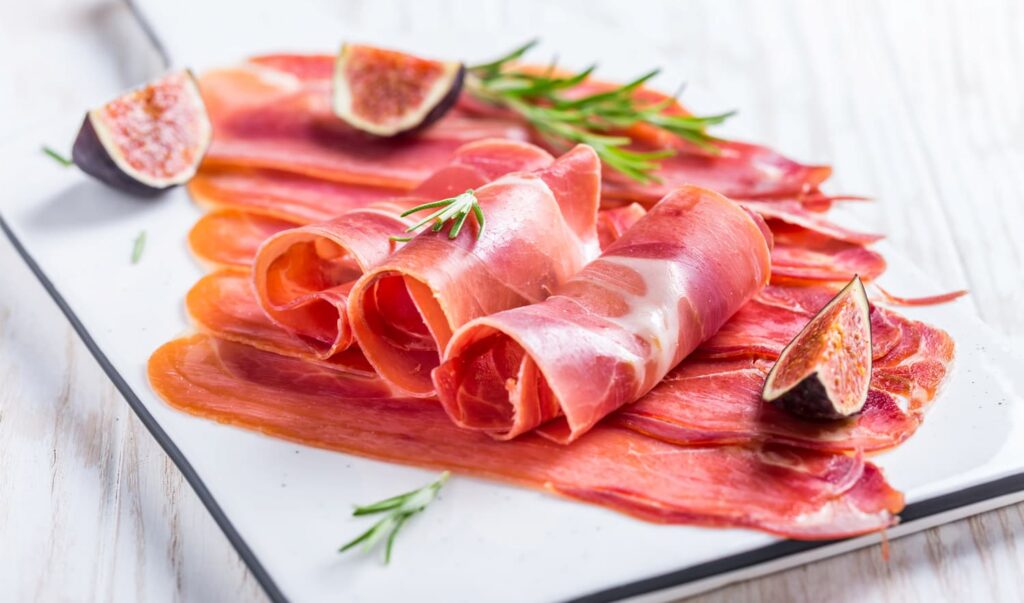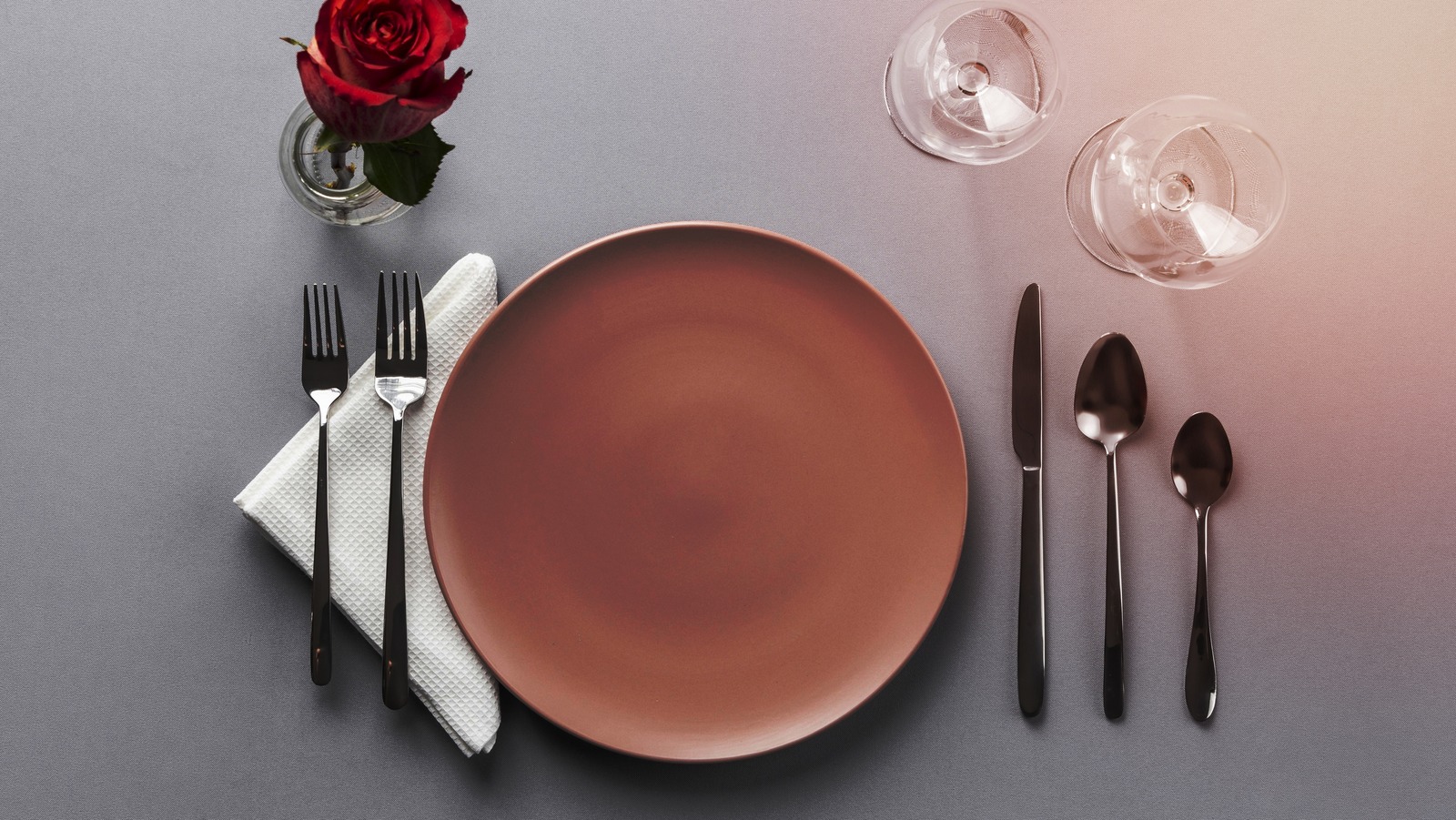Foods
Jamón: Spain’s Iconic Cured Ham
Published
1 week agoon
By
Rock Seo
When it comes to Spanish cuisine, one of the first delicacies that comes to mind is Jamón, the country’s world-renowned cured ham. With a history spanning centuries, this beloved food is not just a treat for the palate but a symbol of Spanish culture and tradition. Whether it’s a casual tapa at a local bar, a festive dish on the dinner table, or a star ingredient in gourmet dishes, Jamón is integral to the Spanish gastronomic identity. But what exactly is Jamón? How is it made, and what sets apart the different varieties? Let’s dive into the rich world of Jamon, exploring its origins, production methods, and cultural significance.
What is Jamón?
The term “Jamón” simply refers to cured ham in Spanish. Derived from the Spanish word jamón, meaning ham, the variety of Jamón enjoyed in Spain typically refers to cured hams made from the hind legs of pigs, which are then salted, air-dried, and aged to perfection. This aging process, which can take anywhere from several months to years, is key to developing the ham’s distinct flavor, texture, and aroma.
Although Jamón is a term used broadly for all types of cured ham, two main types dominate the Spanish market: Jamón Ibérico and Jamon Serrano. These two varieties, while both products of the same process—dry-curing—differ significantly in taste, texture, and price due to differences in the pigs used, their diets, and the production techniques.
The Varieties of Jamón
Jamón Ibérico: The Luxury of Spanish Ham
Arguably the most famous variety, Jamón Ibérico is considered a gastronomic treasure. What makes Jamón Ibérico so special is the breed of pig used to produce it—the Iberian pig (cerdo ibérico). This pig is native to the Iberian Peninsula, and it’s known for its unique ability to store fat within its muscle tissue, which gives the ham its rich marbling and exceptional flavor.
Within the category of Jamón Ibérico, there are several classifications based on the pig’s diet and the length of the curing process:
- Jamón Ibérico de Bellota: This is the most coveted and expensive type of Jamón Ibérico. The pigs are allowed to roam freely in oak forests, known as dehesas, where they feed on a diet of acorns (bellotas) for the last months of their life. This acorn-based diet imparts a nutty, sweet flavor to the ham, and the meat’s fat is rich in oleic acid, similar to olive oil. The curing process for Jamón Ibérico de Bellota typically lasts around 36 months, sometimes even longer, contributing to its deep, complex flavor profile.
- Jamón Ibérico de Cebo: This variety comes from pigs that are fed a diet of grains, rather than acorns. While still rich and flavorful, it is less intense and slightly leaner than its bellota counterpart. These hams undergo a shorter curing period, usually between 24 and 36 months.
- Jamón Ibérico de Cebo de Campo: These pigs are fed a mixed diet of grains and natural pasture, combining the flavors of acorns with the grains. The curing period is also usually around 36 months.
Jamón Serrano: The Traditional Spanish Ham
The other major category of Jamón is Jamón Serrano, which literally means “mountain ham.” The term serrano refers to the traditional method of curing ham in the cool mountain air, where the dry, breezy conditions are ideal for the air-drying process. Unlike the Iberian pigs used for Jamón Ibérico, the pigs used for Jamón Serrano are typically white breeds, such as the Landrace or Large White.
Jamón Serrano is often less expensive than Jamón Ibérico and is typically aged for 12 to 24 months, depending on the specific product. Though not as fatty or rich as its Iberian counterpart, it offers a firm texture and a delicate flavor with notes of saltiness and nuttiness.
There are also several types of Jamón Serrano, depending on the region and the specific curing methods used. Some of the most well-known are Jamón de Teruel (from the province of Teruel) and Jamón de Trevélez (from the Sierra Nevada mountains), both of which are designated with Denomination of Origin (DO) status.
How is Jamón Made?
The process of making Jamón is an art form that combines both ancient techniques and meticulous attention to detail. While there are slight variations depending on the type of Jamón, the basic process for curing ham remains largely unchanged for centuries.
- Slaughtering and Butchering: The process begins with the slaughter of the pig, followed by the careful removal of the hind legs, which will eventually become the Jamón. The leg is then cleaned, and the bone is often left intact.
- Salting: The ham is then covered with coarse sea salt, which helps draw out moisture from the meat, allowing the curing process to begin. This step typically lasts for about 1-2 weeks, depending on the weight of the ham.
- Resting and Washing: After salting, the ham is left to rest for several days to ensure the salt is evenly absorbed into the meat. The leg is then washed to remove excess salt before moving on to the drying phase.
- Air-Drying: The ham is hung in a cool, dry, and well-ventilated space, typically at high altitudes or in cellars with natural airflow. During this stage, the ham undergoes a slow drying process, sometimes lasting up to 36 months for higher-end products like Jamón Ibérico de Bellota.
- Aging: The aging process is essential for developing the complex flavors of Jamón. During this time, enzymes break down proteins and fats, contributing to the ham’s tenderness and rich, savory taste. The longer the ham ages, the more intense and complex its flavor becomes.
The Taste and Texture of Jamón
The taste of Jamón varies significantly depending on the type, aging time, and the diet of the pig. In general, Jamón Ibérico de Bellota is the most flavorful and aromatic, with a melt-in-your-mouth texture. Its fat has a silky quality that dissolves on the palate, releasing the full depth of flavor. In contrast, Jamón Serrano tends to be leaner, with a firmer texture and a more subtle, less complex flavor.
The fat in Jamón is a defining characteristic. In higher-quality hams, particularly Jamón Ibérico, the fat is a key component of the flavor profile. When the fat is tasted, it adds a richness to the overall experience, balancing the salty, savory meat with sweetness and nutty undertones.
How to Enjoy Jamón
Jamón is incredibly versatile, and there are endless ways to enjoy this Spanish delicacy. The most common way is to serve it thinly sliced, allowing the rich flavors to shine through. When slicing Jamón, it’s essential to use a sharp knife and take your time to achieve paper-thin slices, as this helps to release the ham’s aroma and texture.
Some popular ways to enjoy Jamón include:
- Tapa-style: Served as small slices or chunks alongside olives, bread, and wine in a classic Spanish tapa.
- With bread: A simple yet delicious way to enjoy Jamón is by placing slices on top of toasted baguette or rustic bread, often drizzled with olive oil.
- As part of a sandwich: Jamón is often used in bocadillos (Spanish sandwiches), where it pairs well with a variety of cheeses, tomatoes, and even roasted peppers.
- In gourmet dishes: Chefs often use Jamón as an ingredient in salads, pasta dishes, or even as a topping for pizza.
The Cultural Significance of Jamón
Jamón is not just food—it’s a cornerstone of Spanish culture. From the countryside to the bustling streets of Madrid, Jamón plays a central role in Spanish life. It’s a food that brings people together, whether shared in a family meal, celebrated at a fiesta, or enjoyed with a glass of wine at a local tavern.
Beyond its culinary role, Jamón is often seen as a symbol of quality and tradition, with families passing down recipes and techniques for curing ham across generations. It also holds cultural significance in the Spanish economy, where production and exportation of Jamón—especially the prized Jamón Ibérico—serve as major drivers of the nation’s agricultural and culinary industries.
Conclusion
Jamón is a true Spanish masterpiece, with its rich history, cultural significance, and unique production methods. Whether you’re savoring a plate of Jamón Ibérico de Bellota or enjoying a simple slice of Jamón Serrano, this iconic cured ham offers a window into Spain’s culinary heritage. From its meticulous production process to the vibrant culture surrounding it, Jamón is far more than just a food—it’s a celebration of Spain’s artistry, craftsmanship, and love for fine ingredients.
You may like
Foods
The Salad Fork: A Culinary Essential with an Elegant History
Published
1 week agoon
October 29, 2025By
Rock Seo
In the world of fine Salad Fork dining, the table setting is often an understated yet essential aspect of the experience. The careful arrangement of utensils, glasses, and plates not only showcases the sophistication of the establishment but also sets the stage for an enjoyable meal. Among the various tools at a formal dining table, the salad-fork holds a special place. While this piece of flatware may seem simple, it has a rich history and plays an important role in the way we enjoy meals. In this article, we’ll explore the origins, uses, and significance of the salad fork in modern dining etiquette.
Origins and Evolution of the Salad Fork
The salad fork’s roots trace back to the 19th century when dining etiquette began to formalize. Before the development of specialized utensils, people typically used larger forks for nearly every part of their meal. In the early 1800s, however, it became clear that certain foods—like delicate salads—required a more specialized instrument to facilitate easier eating.
The salad fork emerged as a response to this need. It is usually smaller than the standard dinner fork and features slightly shorter, narrower tines. These design elements allowed for better handling of salad greens and other lighter, more delicate foods, such as fruits, shrimp, or cold meats. Early salad forks were not universally included in all place settings, but as formal dining became more popular, the tool gradually gained acceptance.
By the early 20th century, as dining customs grew more elaborate, the salad-fork became a permanent fixture at the table, especially in Western European and American fine dining. During this period, various other specialized utensils—such as the soup spoon, fish fork, and dessert spoon—also emerged, each designed for specific parts of the meal. This development signaled a shift towards a more organized and refined dining experience.
Characteristics of the Salad Fork
Salad forks are typically characterized by a few distinct features that set them apart from their counterparts. While there is no standardized size, they generally fall between the smaller dessert fork and the larger dinner fork in terms of length and width.
- Size and Proportions: A typical salad fork is around 6 to 7 inches long. Its size allows for a more controlled and delicate handling of leafy greens or other ingredients commonly found in salads.
- Tine Shape: The tines of the salad fork are generally more rounded and shorter compared to those of a dinner fork. This design helps avoid tearing delicate lettuce or herbs, ensuring that the salad is neatly cut rather than crushed.
- Material and Finish: Like other high-quality flatware, salad-forks are often made from stainless steel, silver, or even gold-plated materials for formal occasions. The finish on the fork may vary, with some having a brushed, polished, or matte appearance. The type of material used can speak to the formality and occasion of the meal.
Proper Etiquette and Usage
The salad fork is traditionally used at the beginning of a meal, typically when a salad course is served. It is a sign of the formality of the occasion, as salads were once considered an elegant and refined dish. Here are some guidelines for using the salad fork according to proper etiquette:
- Placement in the Setting: In a formal dinner setting, the salad fork is placed to the left of the dinner fork, usually the outermost fork. It is meant to be used first, during the salad course, before the main entrée.
- Holding the Fork: As with any piece of flatware, it is important to hold the salad fork correctly. When using the salad fork, the tines should face downward, held lightly between the thumb, index, and middle fingers. This allows for more precise control when cutting or scooping delicate salad ingredients.
- Cutting the Salad: While it is generally not necessary to cut individual pieces of lettuce, the salad fork can be used to help break down large or tough ingredients, such as chunks of tomatoes, cucumbers, or croutons. Unlike a dinner fork, which is designed for piercing, the salad fork allows for more delicate cutting.
- Eating the Salad: The goal when using the salad fork is to take small, manageable bites. When using the salad fork, it is important to maintain an elegant pace—taking the time to appreciate the textures and flavors of the salad without rushing.
The Salad Fork in Modern Dining
Today, the salad fork has found its place not only at formal dinner parties and upscale restaurants but also in more casual settings. In restaurants, it is often used for a variety of dishes beyond just salads. For instance, it may be employed for eating appetizers, cold appetizers, or even small plates that require delicate handling. The fork’s smaller size makes it perfect for tackling smaller portions of food that require precision.
In more casual environments, many people opt for multi-purpose utensils and use the standard dinner fork for salads as well. This trend, however, can detract from the overall dining experience, as specialized utensils are designed to enhance the enjoyment of different courses. The use of the salad fork, while seemingly a small detail, can elevate the meal, especially when served with a complex or gourmet salad.
For those who appreciate formal dining, a beautifully set table, and adherence to tradition, the salad fork is an important part of the culinary experience. Its continued use in fine dining restaurants and its prominence in haute cuisine reflect a commitment to culinary excellence and respect for the rituals of eating.
Cultural Variations and the Salad Fork
While the salad fork is an essential element of Western dining etiquette, other cultures may have different approaches to salads and the utensils used to eat them. In many parts of the world, salads are often served with a main meal rather than as a separate course. For example, in Mediterranean countries, salads may be eaten with bread or in conjunction with main dishes, negating the need for a specialized fork.
Similarly, in many Asian cultures, salads are typically served in bite-sized pieces or in a way that makes them easy to pick up with chopsticks or spoons, making a fork unnecessary. These cultural differences highlight how the role of the salad fork is shaped by both culinary traditions and societal customs.
Conclusion
The salad fork may seem like a simple piece of flatware, but its history and role in the world of fine dining reflect deeper values of elegance, tradition, and attention to detail. From its origins in the 19th century to its present-day use, the salad fork has evolved alongside changes in dining etiquette and culinary sophistication. Whether you’re at a formal dinner party or enjoying a light meal with friends, this unassuming utensil continues to serve as a symbol of refinement and careful attention to the art of dining.
In an era where convenience often takes precedence over tradition, the salad fork serves as a reminder of the pleasures that come with slowing down and savoring the meal. So, the next time you sit down to a beautifully plated salad, take a moment to appreciate not just the flavors and textures, but also the elegant tool designed to enhance the experience—your trusty salad fork.
Foods
Exploring the Unique Flavors of Soutaipasu: A Culinary Journey
Published
2 weeks agoon
October 22, 2025By
Julliet
Soutaipasu is more than just a culinary trend; it’s an experience that ignites the senses. This Japanese concept of paired drinking elevates meals into a harmonious dance of flavors and aromas. Imagine sipping on exquisite beverages that enhance each bite, creating a symphony on your palate. Join us as we embark on a flavorful journey through the unique world of soutaipasu, exploring its rich history, vibrant ingredients, and health benefits while discovering how to incorporate this delightful practice into your dining adventures. Whether you’re a seasoned foodie or just curious about new tastes, there’s something here for everyone!
Exploring the Unique Flavors of Soutaipasu: A Culinary Journey
Soutaipasu invites you to explore a rich tapestry of flavors that celebrate the art of pairing drinks with food. Each combination is thoughtfully crafted, enhancing both taste and experience.
From delicate sakes to robust teas, every drink complements traditional dishes in unique ways. The interaction between ingredients creates memorable moments at the table, making each meal an adventure for your palate.
Introduction to Soutaipasu and its Meaning
Soutaipasu is a captivating culinary concept rooted in Japanese culture. It blends the art of food and drink pairing, enhancing the dining experience through carefully selected combinations. Each dish finds its perfect match, creating a harmonious balance that excites the palate.
The word itself reflects this synergy, emphasizing how flavors interact to elevate meals. Soutaipasu invites diners to explore diverse tastes while celebrating tradition and creativity in every bite and sip.
The Concept of Paired Drinking in Japanese Culture
Paired drinking, or “soutaipasu,” is a cherished practice in Japanese culture. It emphasizes harmony between food and drink, enhancing flavors and the overall dining experience. This tradition encourages thoughtful combinations that elevate each element on the table.
In many households, this concept creates an inviting atmosphere for sharing meals. Whether it’s sake with sushi or tea with sweets, each pairing tells a story and connects people through taste.
Benefits of Pairing Drinks with Meals
Pairing drinks with meals enhances the dining experience by elevating flavors. The right beverage can complement textures and enrich aromas, making every bite more satisfying.
This thoughtful combination can also aid digestion and improve overall enjoyment. Whether it’s wine with cheese or sake with sushi, harmonizing tastes creates memorable moments that delight the senses in unexpected ways.
The History and Origins of Soutaipasu
Soutaipasu has rich historical roots in Japanese culture, emerging as a refined art of paired drinking. This practice dates back centuries, where meal accompaniment turned into an essential dining ritual.
As the concept evolved, so did the ingredients and flavors that define soutaipasu today. It reflects regional diversity and culinary innovation, showcasing Japan’s profound appreciation for harmony between food and drink.
Historical Background of Soutaipasu
Soutaipasu has deep roots in Japanese history, evolving from traditional dining practices. Its origins can be traced back to the Edo period when culinary arts flourished and cultural exchanges emerged.
As Japan embraced foreign influences, unique flavor combinations developed. This blending of local ingredients with innovative techniques laid the foundation for what we now recognize as soutaipasu, creating a rich tapestry of flavors that continues to captivate palates today.
The Origins and Meaning of Soutaipasu
Soutaipasu, a term rooted in Japanese culture, embodies the art of pairing drinks with meals. The word marries “sou,” meaning flavor or taste, with “taipasu,” reminiscent of tapas-style sharing. This concept celebrates harmony within culinary experiences.
Historically, it reflects Japan’s deep respect for balance and aesthetic appeal in dining. Each sip enhances flavors, allowing an exploration of rich traditions that connect food and drink on a much deeper level.
Unique Flavors and Ingredients of Soutaipasu
Soutaipasu brings a delightful array of flavors that intertwine tradition and creativity. Key ingredients like sake, umami-rich soy sauce, and seasonal vegetables create depth in every dish.
Spices such as yuzu zest and shiso leaves elevate the experience, adding bright notes to savory plates. Each element harmonizes beautifully, inviting diners to explore a culinary world filled with surprises at every bite.
Key Ingredients and Spices Used in Soutaipasu Dishes
Soutaipasu dishes are celebrated for their vibrant flavors, often enhanced by a range of unique ingredients. Commonly used items include fresh seafood, rice, and seasonal vegetables. Each ingredient is carefully selected to create a harmonious blend.
Spices play a crucial role in defining the taste profile of Soutaipasu. Traditional seasonings like soy sauce, miso, and wasabi add depth while balancing the meal’s complexity with umami notes.
The Unique Flavors and Ingredients of Soutaipasu
Soutaipasu showcases a rich tapestry of flavors, blending savory and umami notes that excite the palate. Key ingredients often include fresh seafood, seasonal vegetables, and aromatic herbs that elevate each dish.
The use of unique spices such as sansho pepper and yuzu zest adds an intriguing twist. These elements create harmonious pairings with beverages, enhancing the overall dining experience while celebrating Japan’s culinary heritage in every bite.
Health Benefits and Culinary Aspects of Soutaipasu
Soutaipasu offers a delightful fusion of flavors that not only tantalizes the taste buds but also promotes health. Many ingredients used in these pairings, like fresh herbs and spices, boast anti-inflammatory properties.
Incorporating soutaipasu into meals encourages mindfulness around food choices. This approach enhances digestion and allows for an enjoyable dining experience while nourishing the body with essential nutrients found in traditional Japanese fare.
Health Benefits of Soutaipasu
Soutaipasu offers numerous health benefits, making it a delightful addition to any diet. The carefully selected ingredients often include natural herbs and spices known for their medicinal properties. These components can help boost immunity and enhance overall well-being.
Additionally, the practice of paired drinking encourages mindful consumption. This approach not only heightens the dining experience but also promotes moderation, preventing overindulgence in food and drink.
Traditional Soutaipasu Combinations and Their Health Benefits
Traditional soutaipasu combinations often feature fresh seafood paired with light, crisp sake. This pairing not only enhances the flavors but also promotes digestion and boosts hydration.
Another popular combination includes grilled meats alongside rich red wine. The tannins in the wine can aid in iron absorption from the meat, making this duo both flavorful and beneficial for health-conscious diners seeking a balanced meal experience.
Incorporating Soutaipasu in Various Settings
Soutaipasu transcends traditional dining, making its mark in various settings. Restaurants are embracing this concept by offering curated menus that showcase harmonious pairings of food and drink.
Social gatherings also benefit from the unique flavors of soutaipasu. Whether it’s a casual get-together or a festive celebration, incorporating these delightful combinations can elevate the culinary experience and delight guests with new taste sensations.
Soutaipasu in Various Industries
Soutaipasu is making waves in various industries beyond traditional dining. Restaurants are incorporating these unique flavor pairings into their menus, creating exceptional culinary experiences that attract food enthusiasts.
Craft breweries and wineries are also joining the trend, crafting beverages designed specifically for soutaipasu pairings. This innovative approach not only enhances meals but also elevates the overall dining experience, appealing to a broader audience eager for new flavors to explore.
Culinary and Cultural Aspects of Soutaipasu
Soutaipasu embodies a rich tapestry of culinary and cultural significance in Japan. This practice intertwines food with tradition, highlighting the importance of harmony between flavors and beverages.
In gatherings, it fosters connection and celebration. Each soutaipasu pairing invites diners to experience not just taste but community, making every meal an exploration of heritage through shared enjoyment and creativity.
Tips for Creating a Soutaipasu Experience
Creating a Soutaipasu experience at home starts with selecting the right pairings. Choose dishes that highlight fresh ingredients, balancing flavors and textures. Experiment with various beverages, like sake or shochu, to complement your meal.
Set the ambiance by using traditional Japanese tableware and decor. Consider soft lighting and calming music to enhance the dining atmosphere. Engage your guests in conversation about each pairing for an immersive experience.
How to Create a Soutaipasu Experience at Home?
To create a soutaipasu experience at home, start by selecting complementary dishes and drinks. Consider pairing grilled fish with sake or vegetable tempura with shochu for an authentic feel.
Set the mood with traditional Japanese décor and soft lighting. Encourage your guests to enjoy each sip alongside their meal. This enhances flavors and fosters connection, making every bite more meaningful in your culinary journey.
Incorporating Soutaipasu flavors into your own cooking
Incorporating soutaipasu flavors into your cooking is both an art and a delight. Start by experimenting with traditional ingredients like miso, soy sauce, or sake to deepen the umami experience in your dishes.
You can also play with spices such as shichimi togarashi for heat or yuzu zest for brightness. By blending these elements, you’ll awaken your palate and bring a unique twist to everyday meals.
Conclusion & Future Trends
Modern innovations in soutaipasu pairings are on the rise. Chefs are exploring new flavors and combinations, enhancing traditional dishes with unexpected ingredients. This evolution opens up exciting possibilities for food enthusiasts.
As culinary boundaries blur, the future of soutaipasu looks promising. Collaborations between local brewers and chefs may lead to unique drink options that perfectly complement meals, creating a vibrant dining experience unlike any other.
Modern Innovations in Soutaipasu Pairings
Modern innovations in soutaipasu pairings are reshaping culinary experiences. Chefs are experimenting with unique flavor combinations, such as craft beers alongside traditional sushi or sake paired with fusion dishes. These fresh approaches invite diners to explore new taste profiles.
Moreover, the rise of artisanal beverages has expanded choices for pairing. Infused teas and specialty cocktails now complement various cuisines, making each meal a memorable journey through Japan’s rich flavors.
The Future of Soutaipasu: The Perfect Drinks to Complement Your Meal
The world of soutaipasu is evolving. As chefs and home cooks experiment with flavors, the combinations are becoming more exciting. Future trends may see innovative pairings that enhance traditional dishes while introducing new tastes.
As culinary boundaries blur, expect to discover unexpected drinks that complement meals perfectly. New ingredients and techniques will continue to redefine what soutaipasu means in modern dining experiences. The journey through flavor and culture remains vibrant, promising endless possibilities for food lovers everywhere.

We’ve all been there. Scrolling through social media, a targeted ad stops you mid-thumb. This time, it was for a brand called Candizi, promising high-quality, stylish pieces at a price point that seemed almost too good to be true. As someone perpetually caught between a love for fashion and a realistic budget, my curiosity was piqued. After a few weeks of deliberation, I took the plunge. This is my honest, unfiltered experience.
First Impressions: The Hunt and The Hesitation
Let’s start with the website. Candizi’s platform is clean, modern, and easy to navigate. The product photography is beautiful—think soft, natural lighting and models who look effortlessly cool. I found myself easily falling into the rabbit hole of scrolling through their collections, from elegant linen dresses to chic, everyday basics.
However, the initial hesitation was real. In the world of direct-to-consumer brands, stunning photos can sometimes be a mask for disappointing quality. I scrutinized the reviews on their site, which were overwhelmingly positive, but a healthy dose of skepticism remained. Were they curated? I decided to test the waters with a few key items: a classic trench coat, a pair of tailored trousers, and a simple silk-blend camisole.
The Unboxing: A Mixed Bag
The package arrived sooner than expected, which was a definite plus. The packaging was minimalist and eco-friendly—a simple cardboard box with tissue paper, no excessive plastic. It felt considered and modern.
I unboxed the items with a mix of excitement and trepidation.
- The Trench Coat: This was my biggest gamble. I was immediately impressed. The fabric had a nice weight to it, the stitching was even, and the buttons felt secure. It wasn’t the heavy wool blend of a designer brand, but for the price, it far exceeded my expectations. It felt like a solid, stylish staple.
- The Tailored Trousers: Here, I encountered my first hiccup. The cut was modern and flattering, but the fabric was thinner than it appeared online. It was a classic case of “you get what you pay for.” While perfectly fine for a season or two, I doubted its long-term durability.
- The Silk-Blend Camisole: This was the true test. The color was beautiful, and the feel against the skin was lovely and smooth. However, the “silk-blend” was clearly heavy on the “blend.” It was a nice top, but it didn’t have the luxurious, temperature-regulating feel of pure silk. It was accurately described, but my own expectations needed recalibrating.
The Verdict: Weighing Value Against Expectation
After living with these pieces for a few weeks, here’s my honest breakdown:
The Pros:
- Style for Less: Candizi absolutely delivers on trend-forward, aesthetically pleasing designs. You can build a stylish, contemporary wardrobe without breaking the bank.
- Surprising Gems: Items like their outerwear and structured dresses seem to be where they shine. These pieces often use more robust fabrics that belie their price tags.
- User-Friendly Experience: From browsing to checkout to delivery, the entire process was seamless.
The Cons & Considerations:
- Fabric Roulette: The biggest lesson is to read the product descriptions carefully. Don’t just look at the pictures. Understand the fabric composition. You may be delightfully surprised, or you may find the material a bit lacking.
- Sizing Can Be Tricky: I found their sizing to be generally consistent, but leaning slightly small. When in doubt, check the size chart meticulously. This isn’t a brand where you can blindly order your usual size.
- It’s Not Investment Dressing: Candizi is perfect for refreshing your wardrobe with current styles, but these are not heirloom pieces. Manage your expectations regarding longevity.
The Final Takeaway: Who is Candizi For?
Candizi isn’t trying to be a luxury heritage brand, and that’s okay. Once I adjusted my perspective, I appreciated it for what it is.
Candizi is perfect for:
- The Trend-Conscious Shopper: If you love updating your wardrobe with the latest silhouettes without a massive financial commitment.
- The New Graduate or Young Professional: Building a work-appropriate and social wardrobe on a tight budget.
- Anyone Who Loves the “Thrill of the Hunt”: If you enjoy sifting through collections to find those surprisingly high-quality gems.
My honest experience with Candizi was a lesson in modern consumerism. It’s a solid, stylish, and affordable brand that delivers great value if you shop smartly. Don’ expect $500 quality for $50, but do expect well-designed, wearable fashion that allows you to express your personal style without buyer’s remorse. I’ll definitely be shopping with them again—but with a more discerning eye and a clear understanding of what I’m truly getting.
Trending
-

 Local Information2 weeks ago
Local Information2 weeks agoSodiceram Explained: Innovative Designs and Eco-Friendly Practices
-

 Tech2 weeks ago
Tech2 weeks agoTrucofax Revolutionizes In-Game Customization
-

 News2 weeks ago
News2 weeks agoKirby Dedo Guide: All You Need to Know About Character Abilities and Combos
-

 Foods2 weeks ago
Foods2 weeks agoDiscovering Candizi: My Honest Experience
-

 Tech2 weeks ago
Tech2 weeks agoSeekDe: The Rising Platform for Freelancers and Clients in a Crowded Market
-

 Foods2 weeks ago
Foods2 weeks agoExploring the Unique Flavors of Soutaipasu: A Culinary Journey
-

 Entertainment2 weeks ago
Entertainment2 weeks agoAxurbain: The Unsung World-Builder of the Wandering Inn
-

 Local Information2 weeks ago
Local Information2 weeks agoTrucofax: A Comprehensive Guide to Its Features and Benefits
